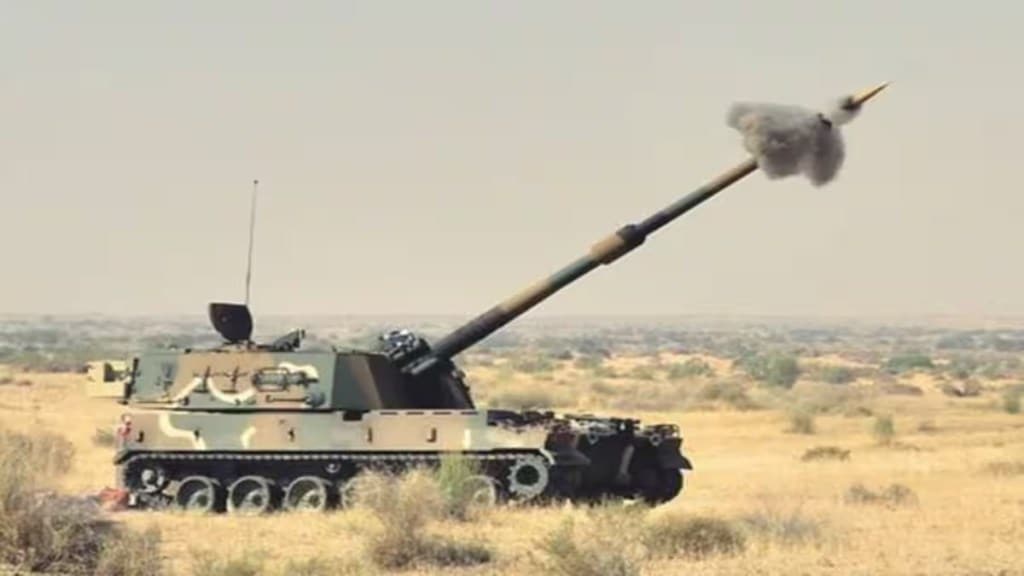Historical data spanning World War I onwards has consistently revealed a stark reality: approximately 80% of war casualties can be attributed to artillery fire. Recent global conflicts, such as the Russia-Ukraine war, have underscored the critical role of firepower as a decisive factor in battle. The ability to deliver precision strikes at extended ranges has become paramount, as demonstrated by the Russian and Ukrainian forces.
Lessons for the Indian Army
Taking cues from the lessons of the Ukraine conflict, according to sources in the military establishment, “the Indian Army has embarked on a significant overhaul of its artillery regiment. The focus now lies on a strategic combination of mobility and enhanced long-range firepower. The Army has set a goal to transition its entire artillery to medium 155 mm gun systems by 2042.”
Regiment of Artillery
To achieve this ambitious transformation, the Regiment of Artillery is pursuing a comprehensive five-point plan:
- Mediumisation of Guns: The adoption of technologically advanced platforms for artillery pieces.
- Development of Rockets and Missile Regiments: These regiments will feature extended ranges and heightened precision, aligning with the modern battlefield’s demands.
- Modernisation of Munitions: The emphasis is on munitions with enhanced ranges and accuracy.
- Reorganisation of Surveillance and Target Acquisition (SATA) Units: These units will undergo restructuring to optimize surveillance, data management, coordination, and targeting capabilities.
- Development of Sensor-Shooter Networks: Establishing efficient sensor-shooter networks and processes is crucial for modern artillery operations.
“The Regiment of Artillery, in collaboration with the Operations Branch, has conducted an in-depth study to revamp our artillery profile. The focus is on incorporating more self-propelled and mounted gun systems,” the source explained. It is acknowledged that firepower alone can tip the balance in battle, and maneuverability must be complemented by superior firepower.
The Indian Army’s strategy entails standardizing artillery guns to 155 mm caliber. This transition to indigenous guns is expected to be completed by 2042. The importance of achieving a balanced mix of guns and missiles has also been underlined.
One of the critical takeaways from recent conflicts is the need for rapid target acquisition and engagement. The time from target identification to firing has decreased significantly, necessitating strategies for improved survivability, including shoot-and-scoot techniques.
The Russia-Ukraine conflict underscores the importance of being prepared for protracted warfare. India must develop its indigenous defense industry based on its capabilities, ensuring the ability to surge when necessary.
In alignment with these priorities, the Army has already inducted modern artillery systems, including the M777 Ultra-Light Howitzer and the K9-Vajra Self Propelled Guns. Additional procurement plans are underway, including Dhanush guns and Sharang guns.
Request for Proposal
The Army has issued Requests for Proposals (RFPs) for two more gun systems: the 155mm/52 calibre Advanced Towed Artillery Gun System (ATAGS) and the Mounted Gun System (MGS), which offers shoot-and-scoot capabilities. The focus is on acquiring approximately 300 of these advanced artillery pieces.
Indigenization of munitions is another significant aspect of this modernization effort. Ongoing trials involve four types of munitions, with an emphasis on developing more lethal and precision ammunition. Initiatives like Excalibur and Precision Guidance Kit (PGK) enhance the precision capabilities of artillery guns. Future plans include Course Correctable Fuzes and Terminally Guided Munitions to further enhance precision targeting.
Collaboration with academia, including institutions like IIT Delhi and IIT Chennai, is actively contributing to the development of advanced technologies. The development of guided extended-range rockets for Pinaka, along with trials for Area Denial Munitions (ADM), demonstrates a commitment to a versatile arsenal.
In essence, India’s artillery modernization strategy is a multi-faceted approach aimed at achieving superior firepower, precision, and adaptability on the modern battlefield. With a clear roadmap in place, India’s artillery forces are gearing up for the challenges of the future, ensuring that they remain at the forefront of military innovation and capability.
This comprehensive plan for artillery modernization represents India’s commitment to maintaining a formidable defense posture and bolstering its capabilities in an ever-evolving global security landscape. The transformation of the artillery regiment is not only about enhancing firepower but also about ensuring the readiness and adaptability of India’s armed forces to face any future challenges with confidence and competence.

